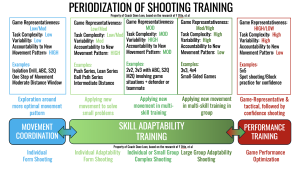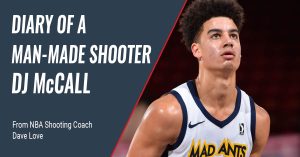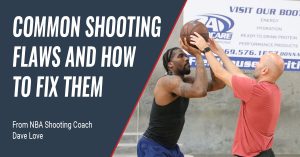This is one of my favourite newsletters to write. It’s something that I’ve never seen anyone else write about or talk about, and I think it is REALLY important in a lot of different ways.
Where do I stand during player workouts?
I have the luxury in the NBA of having rebounders at most workouts I do with players. Not all, but most workouts I get to stand wherever I want because I don’t have to worry about being the rebounder and passer as well. You may need to be those people, but that doesn’t mean you can’t be creative.
Let’s start with the most obvious reasons to stand in different positions – to see different things.
From what I’ve seen, most coaches stand in front of the players for the bulk of their shots. I end up standing behind the player 80% of the time. This gives me a better angle to see how their hand is positioned on the ball at their set point. From the front you just can’t see their fingers and the fingers are really important to me.
I also spend a decent amount of time standing on the shooting hand side of players at a 90 degree angle. So if they are shooting free throws, I would be standing on the free throw line extended on their shooting hand side. This is a good position to be able to see how they are generating arc.
I will spend time standing in front of the player, but it is minimal. If I need to see something from this angle I would much rather stand behind. The only time I will make a point to stand in front of the player is to see how the ball is getting from triple threat position to their set point, but even then I can get a good sense of that from over their shoulder.
The other part of where I stand that gets overlooked is the distance from the player. This plays a huge role in our relationship and the trust between us.
In the beginning, I will be standing close enough to the player to be able to touch them. The reality is I need to adjust their body position often, so I stay close, but there is another message I’m sending. I’m implying to the player “I’m here for you” by standing close to them. This also allows me to speak quietly to them, which I feel is important when they are trying something new.
Then, as their skills develop and they improve, I’m able to step away from the player. It’s almost like I’m saying to them “you’ve got this, I trust you”. This might not happen for a couple of weeks, and the player might not even be aware of it consciously, but I believe they can feel it. I’ll even do it more obviously over the course of 10 free throws. I’ll start right beside them, quietly giving reminders, and as they make shots I’ll drift away from them to the point where I might even be standing on the sideline.
All these ideas play a role in coaching. Everything we do sends a message, and we need to be aware of the messages we are sending.



